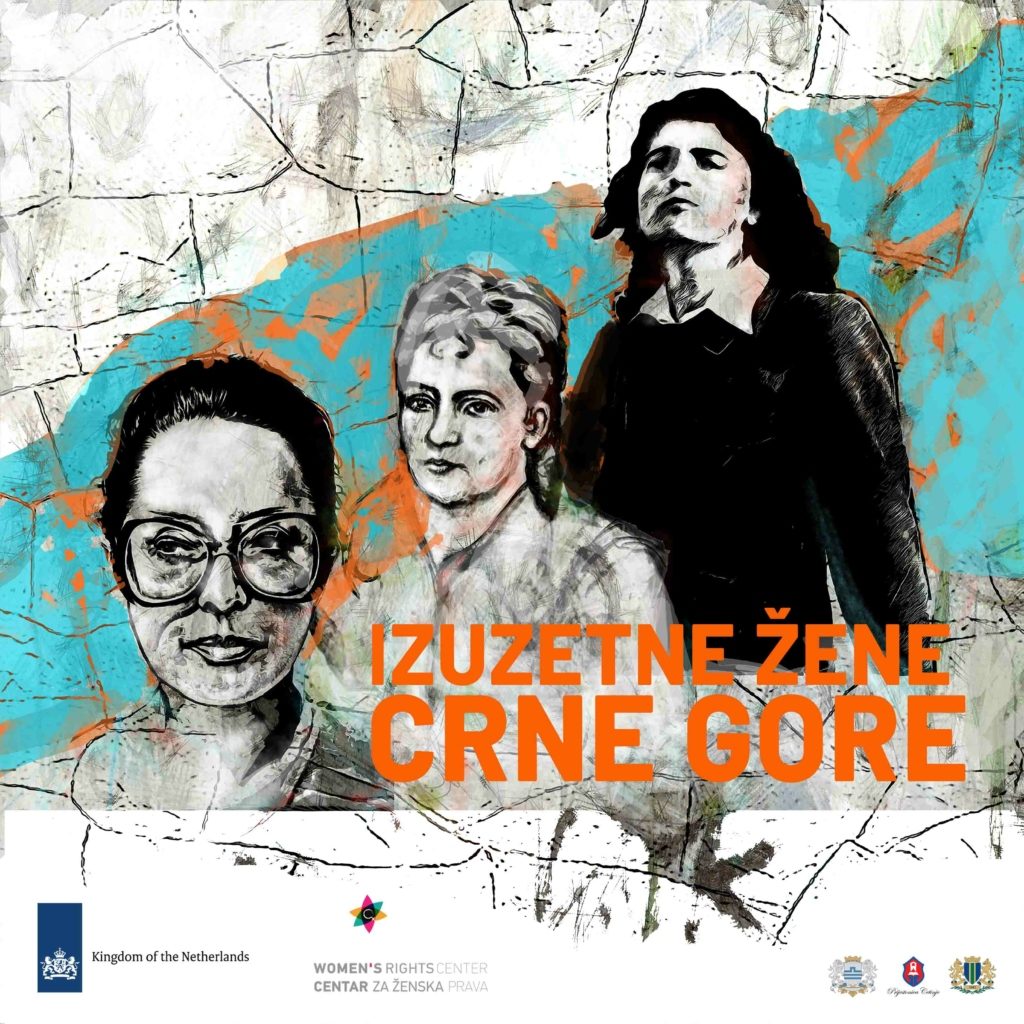This post is also available in: Français (French)
It is a known fact that women are still oppressed in society. In today's world of global challenges to democracy, we are witnessing an attack on women's rights over their bodies as their right to make independent decisions about their own lives is increasingly being questioned and denied.
In an attempt to counter these trends, the Netherlands, which places a great deal of importance on women’s rights both internally and in countries where it has embassies, has initiated a project that would highlight notable women from Montenegrin society, granting them heightened visibility through accessible street art portrayals.
The women chosen as inspiration for the murals are revolutionaries, activists, educators, ambassadors, architects, and feminists from the nineteenth and twentieth centuries, known for their female strength and solidarity. They are strong, unwavering figures in the fight for women’s emancipation and gender equality. The project aims to give these exceptional women the recognition they deserve: new generations will be introduced to them, and those who already know them will be reminded of the significance of these authentic heroines.
The Center for Women's Rights has announced an open call for artists to send their CV, together with a portfolio and a sketch of the proposed mural, to izuzetnezenecg@gmail.com. The call is open until September 10, 2023.
The first murals will be painted in Podgorica, Cetinje, and Bar—these are the cities where the selected women were born, or the places that were indelibly marked by their lives and work. Below are the Montenegrin women who will be represented in the murals.
The women chosen as inspiration for the murals are revolutionaries, activists, educators, ambassadors, architects, and feminists from the nineteenth and twentieth centuries.
Jelena was born in Kotor, which is also where she received her primary education. At the time, she was one of the few women who were literate, so she devoted herself to the teaching profession. Not only was she the first female teacher in Montenegro, but she was also a revolutionary and educational reformer, taking upon herself the task of educating girls, which was taboo at the time, as women were only seen as family caregivers and child bearers. Once she completed her education in Kotor in 1867, Jelena moved to Cetinje, the historical capital of Montenegro, where she founded the first non-institutional girls’ school. She gathered children from poor families in her apartment and taught them reading, writing, arithmetic, and manual work, and she also gave them drama lessons—all for free. Her arrival in Cetinje brought attention to the education of girls for the first time in the country's history.
The first private school for girls in Cetinje was opened in 1871-72, and two years later it was transformed into a state elementary school for the education of girls. Jelena Vicković is responsible for the literacy of hundreds of girls and women in Montenegro. School regulations of the time indicate that the decision to enroll young girls in school was left to these girls’ parents; the education of female children would not become compulsory until it was regulated by law in 1914.
They are all known for their female strength and solidarity. They are strong, unwavering figures in the fight for women’s emancipation and gender equality.
Stana was a Yugoslav Partisan officer during World War II, a model, a Yugoslav politician, and the first Yugoslav woman diplomat. She was born in Bar and studied to become a teacher. Not long before the Kingdom of Italy occupied Montenegro in 1941, she managed to graduate and immediately joined the Partisans. Shortly after that, she became the first woman commissar in Yugoslavia.
The project aims to give these exceptional women the recognition they deserve: new generations will be introduced to them, and those who already know them will be reminded of the significance of these authentic heroines.
She was wounded twice and by the end of the war was highly decorated and had reached the rank of colonel, her battalion having played an important role in defending Josip Broz Tito. While she was in Drvar, a town in Bosnia, the British military photographer John Talbot took inspiring pictures of her that were then dropped as leaflets all over Europe to encourage people to resist against the occupiers. These photos became widely known to European resistance fighters. After the war, Stana served as a federal minister in the Yugoslav government and was the country's first woman ambassador—to both Norway and Iceland (1963-1967), and later Denmark (1974-1978).
Kana began her education in Cetinje then continued at the Podgorica Gymnasium, and later studied architecture in Belgrade. She was professionally educated in Paris and Moscow, and also in Tokyo at the studio of famous Japanese architect Kisho Kurokawa, but Kana kept her work and life mostly tied to Montenegro, Podgorica especially. She left behind major works, and her characteristic style and the innovation she brought to architecture attracted the attention of experts and architecture lovers from around the world.
Her style was distinctive because of the selection of materials she used and the substantial size and power of her designs, her structures melding with their external environment.
Her most noted work was the Hotel Podgorica, for which she won the Federal Borba Award for Architecture in 1967, as well as the Monument to the Fallen Soldiers of Lješanska Nahija in Barutana, for which she also won a national competition in 1975.
Kana was one of the founders of the Doclean Academy of Sciences and Arts (DANU) and the first woman elected as a full member of the Academy, and she was also the first Vice President of Matica crnogorska.
The works of Kana Radević were presented as part of the famous exhibition entitled “Toward a Concrete Utopia: Architecture in Yugoslavia, 1948-1980,” held at the MoMA Museum in New York in 2018-2019. One of her works even became an integral part of the MoMA collection. In 2021, an overview of Kana's work was presented at the Venice Biennale.
